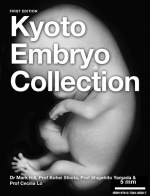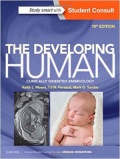ANAT2341 Embryology 2018
Introduction
Welcome to ANAT2341 Embryology in 2018, an undergraduate Science course designed to introduce embryological development and current research topics on development. This course will enable students to broadly understand abnormalities in development and current applications to medical research. Within the Anatomy program it introduces the developmental origin of organs and tissues as a cornerstone for later study of topics such as Visceral or Functional Anatomy, Neuroanatomy, Cell Biology, Microscopy in Research.
A redesigned course for 2018 includes:
- Embryology Theory covered in two face to face lecture each week.
- Research Practicals include lecture revision time, quiz assessments, specialist guest lecturers, one workshop, 2 wet lab pracs, and a journal club.
- Group Projects designed to develop team work and allow independent student research.
Course Coordinators
The 2018 course coordinators are Dr Mark Hill and Dr Annemiek Beverdam.

|

|
| Dr Mark Hill | Dr Annemiek Beverdam |
| Room 221, level 2, Wallace Wurth West | Room 234, level 2, Wallace Wurth East |
| Research profile - email | Research profile - email |
Timetable
There is a separate draft timetable page showing the current 2018 course. Final course content may vary from this draft timetable and direct links to course content are also available from the footer of each content page.
Lecture 1 Face to Face - The first lecture each week is delivered as a "face to face" lecture on Monday 12-1 pm. Content from this lecture may form part of the quiz assessment in the following week.
Lecture 2 Face to Face - The second lecture each week is delivered as a "face to face" lecture on Tuesday 10-11 am. Content from this lecture may form part of the quiz assessment in the following week.
Practical - Most course practicals held on Tuesday (3-5 pm) consist of 2 components, each of approximately 1 hour. During the first hour, we will begin with lecture content revision, followed by a quiz on content of previous week's lecture and practical class. The remaining time will be used for the group project. In the second hour we will introduce a guest lecturer.
We will also have 3 hands-on practical classes, which include one 'dry lab' workshop and 2 wet lab practical classes. Content from guest lecturers and the hands on practical classes will form part of the quiz assessment in the following week.
Please note that the course redesign process is ongoing and some online content links may reflect previous course lectures, practicals and assessments.
Assessment
- Individual assessment consists of quizzes (10%) and journal club (20%): 30%
- Group project assessment (through semester): 20%
- End of session examination (2 hours duration): 50%
Textbooks
There are many different excellent embryology textbooks, the course textbooks are available at the UNSW bookstore. In addition, the UNSW Library provides online access for current students to embryology textbooks that are referenced and linked throughout the course lectures. Both textbooks have been recently updated to 2015 editions. Note you will need to enter your ZID and password to view these online resources.
As an introduction to the online texts, try the first chapter in Moore, Persaud, and Torchia - The Developing Human Introduction to the Developing Human
APA Citations
Moore, K.L., Persaud, T.V.N. & Torchia, M.G. (2015). The developing human: clinically oriented embryology (10th ed.). Philadelphia: Saunders.
Schoenwolf, G.C., Bleyl, S.B., Brauer, P.R., Francis-West, P.H. & Philippa H. (2015). Larsen's human embryology (5th ed.). New York; Edinburgh: Churchill Livingstone.
Textbook Links
The collapsible tables below are direct links to each textbook chapter.
| The Developing Human: Clinically Oriented Embryology (10th edn) |
|---|
|
UNSW Students have online access to the current 10th edn. through the UNSW Library subscription (with student Zpass log-in).
|
|
eBook
This additional general resource linked below is a free 2016 iBook that can be downloaded and viewed on all Apple devices. It introduces to the student the general appearance and growth of the human embryo during the first 8 weeks of development. Including developmental descriptions, histology, MRI and EFIC embryo scans.
| Ebook - Kyoto Collection (1st edn) | |
|---|---|

|
UNSW students can download this free iBook that describes embryos from the first 8 weeks of development showing whole embryos, histological features, movies and high resolution 3D scans. The iBook also contains a linked glossary with descriptions of embryology terminology, and related terms.
Note - Only available for the Apple iPhone, iPad and laptop and desktop computers. No PC version currently available.
|
Moodle
| The Moodle course page below will be made available to students at the beginning of the current course. |

